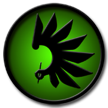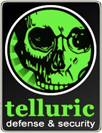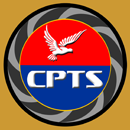Pistol 2: 3 to 4 Drill
Overview:When training with the pistol, the 3 to 4 drill is the most important drill you can do. This is the base drill for working from the holster, multiple target engagements and turn and shoot. The Shooter must perform a number of steps to accomplish this task well.
1. The trigger finger finds its natural position on the trigger.
2. The Shooter extends the pistol towards the target.
3. The support hand falls into its position.
4. Sight alignment and sight picture are established.
5. Slack is removed from the trigger in preparation for final sight alignment.
6. Final sight alignment is confirmed.
7. The trigger is allowed to break and recovery begins.
If the decision to fire is made at position 3, all of these steps need to happen in one fluid motion. Here is where trigger control and timing are learned. This is also where acquisition of the sights, sight alignment and sight picture are trained into the subconscious level. It takes a large number of repetitions to make this skill automatic.
The key is to start slow. Concentrate on one aspect of the drill at a time. In performing this drill don't get discouraged if you fire a round before you reach full extension to position 4. Trigger control is the first priority of this drill. As you work through a number of engagements your body and mind will learn the break point of the trigger. While working on the trigger control concentrate on acquiring the sights.
Work for a slow smooth presentation to target, checking all the blocks, on the way to firing the round. When your presentation and firing become comfortable and your shot group tightens up, then you work on picking up the pace of the drill.
Instructions to Shooters:
1. Once out on the firing line you will be instructed to load and press check.2. Once you have loaded the weapon, de-cock or safe the pistol come to position 3.
3. All engagements are single round engagements. For double to single action weapons, all engagements will be in double action mode.
4. All shots will be fired on the command of “UP.”
5. On the command of “UP” Start presenting the weapon to the target. Acquire the sights and a proper sight picture. Remove as much slack from the trigger as possible without firing the shot. Make final sight corrections and fire. This is a single round engagement drill.
6. After you fire, keep the trigger pressed to the rear and regain your sight picture.
7. Once you have re-established your sight picture slowly let the trigger move forward and feel the trigger reset.
8. After you have felt the reset, scan left and right of your target.
9. After scanning, remove your finger from the trigger, safe or de-cock the weapon and return to position 3.
10. When you’ve returned to position 3 look down at the pistol and check that your weapon is still in operating order. (No stovepipes, malfunctions or that your slide is locked to the rear)
11. When you reach the end of the magazine immediately perform a magazine change and re-engage the target, second sight picture, trigger reset, scan, de-cock or safe then holster and retain the pistol.
12. You will be told when to buddy clear pistols after all shooters have finished the exercise.
Range Master's Call
Once the shooters are on the line and the line is “hot,” start calling the drill. Be sure to keep the pace slow. Give the shooters time to make good shots and follow the drill. Start the drill off by calling the steps. If you are shooting alone, you can also record the call of the drill and play it back on headphones while you are on the range.READY
UP (shooters fire when ready, but have them hold the position until you call the next step)
SIGHT PICTURE
RESET
SCAN
DE-COCK OR SAFE
BACK TO 3
CONDITION CHECK
Repeat until the table is complete. You may decide that the full call is not necessary at some point in the drill and allow the shooters to perform the drill at their own pace as long as you control the rate of fire. Example:
READY
UP (shooters fire, acquire second sight picture, reset trigger, scan, de-cock or safe and return to 3 on their own. Once the entire firing line is back to 3 continue the drill.)
Common Mistakes:
The common mistakes from Pistol 1 still apply. However there are a few new things to watch for.1. Scooping: The pistol does not follow a direct line toward the target.
2. Dropping: The barrel is canted up and is leveled once it reaches full extension.
3. Shot breaks early: Trigger control, getting to know the trigger can be difficult. In novice shooters just concentrate on removing the "slack" from the trigger up to the break point. For advanced shooters, work on timing the shot to full presentation. If the gun is level, and has a good body index during the movement from position 3 to position 4, the shooter will still register a hit, just not as accurate as you would like.
4. Shot after reset: Trigger control. Just as the shot may break early during presentation, it may break again when the trigger is reset and the "slack" is removed back to the break point. Shooters who use double to single action pistols have two trigger break points to learn. If the shooter has acquired a second sight picture, this is not an issue. The bullet will go where aimed.
Drills & Skills
Training
If you're a writer and you need a reference page, check out TactQuill.com.




